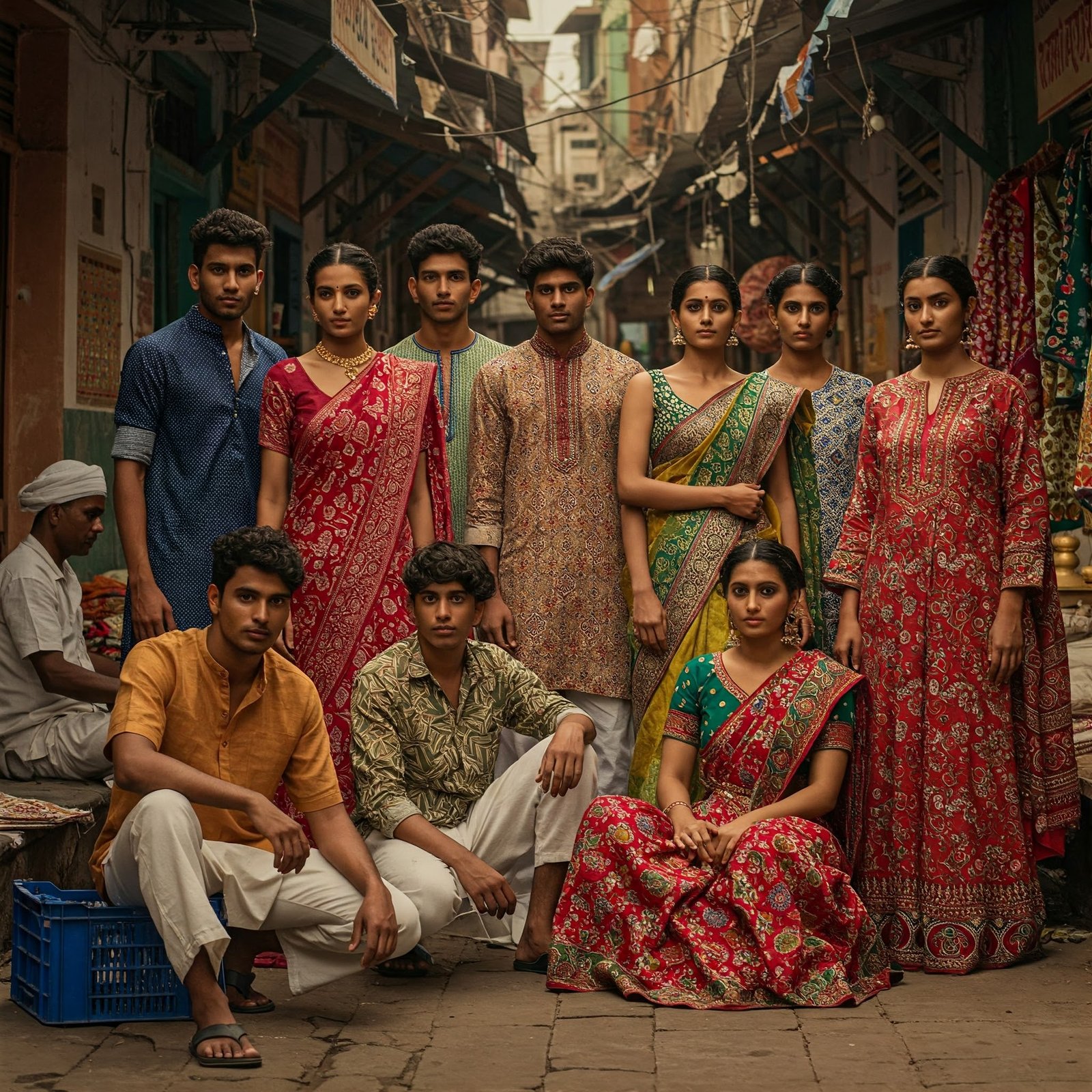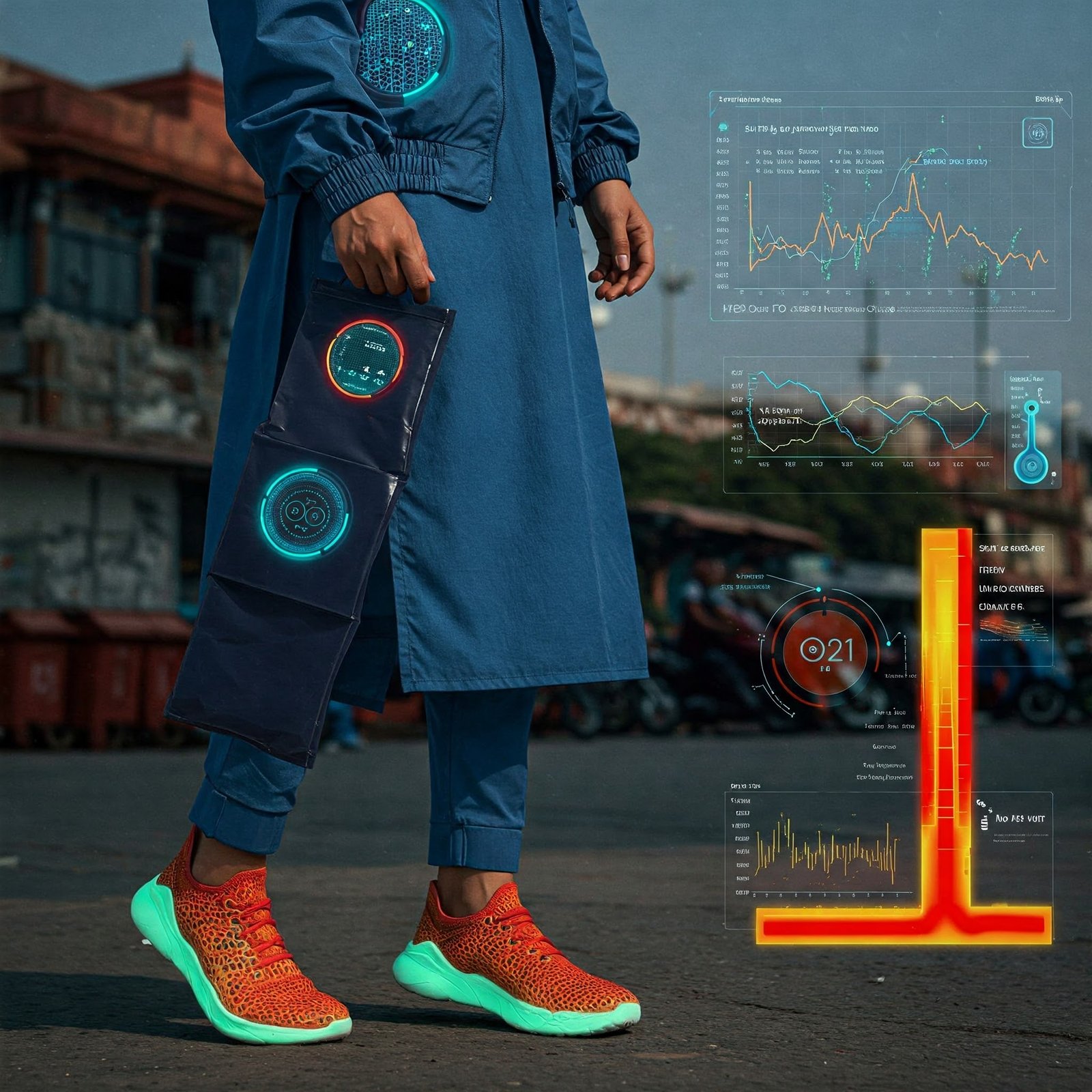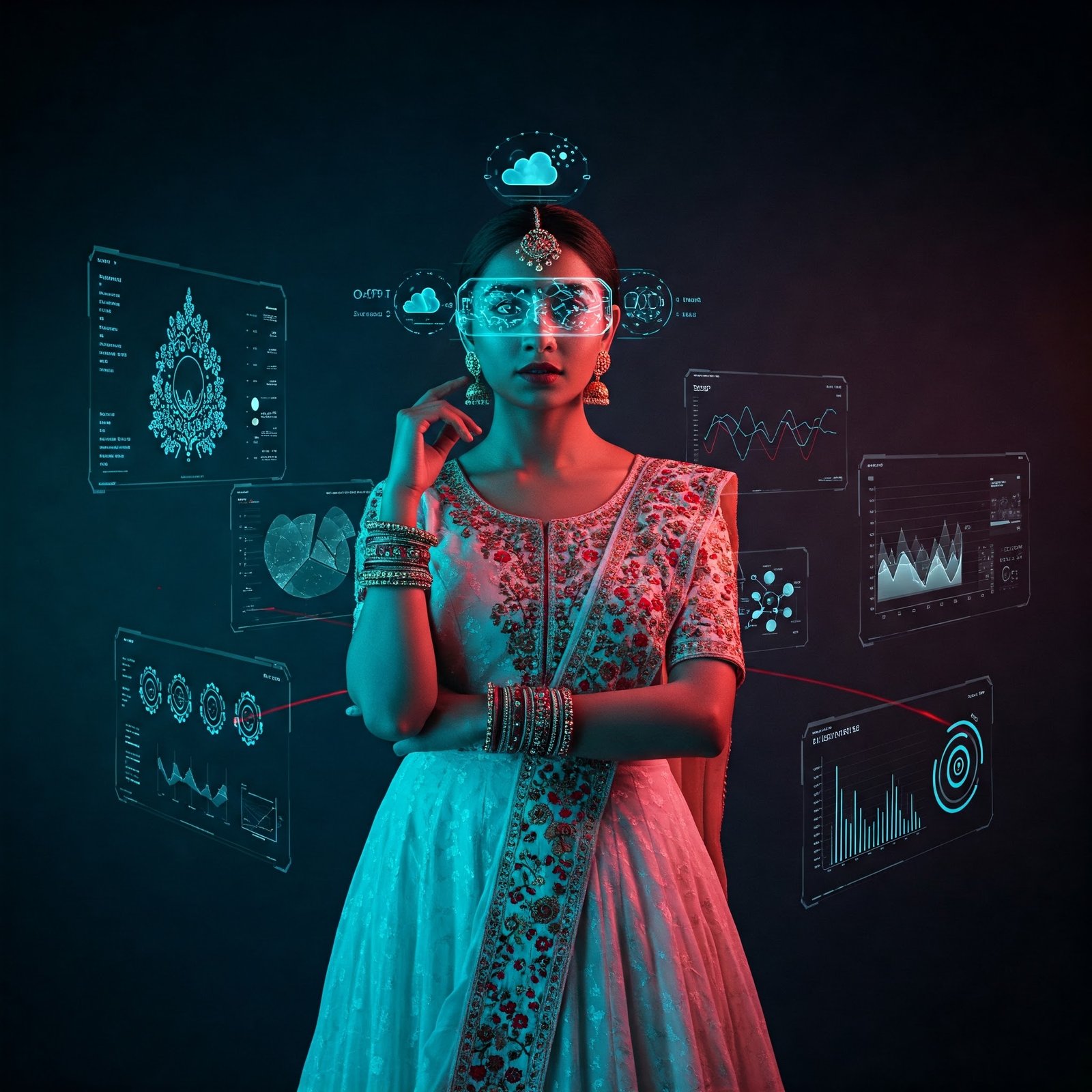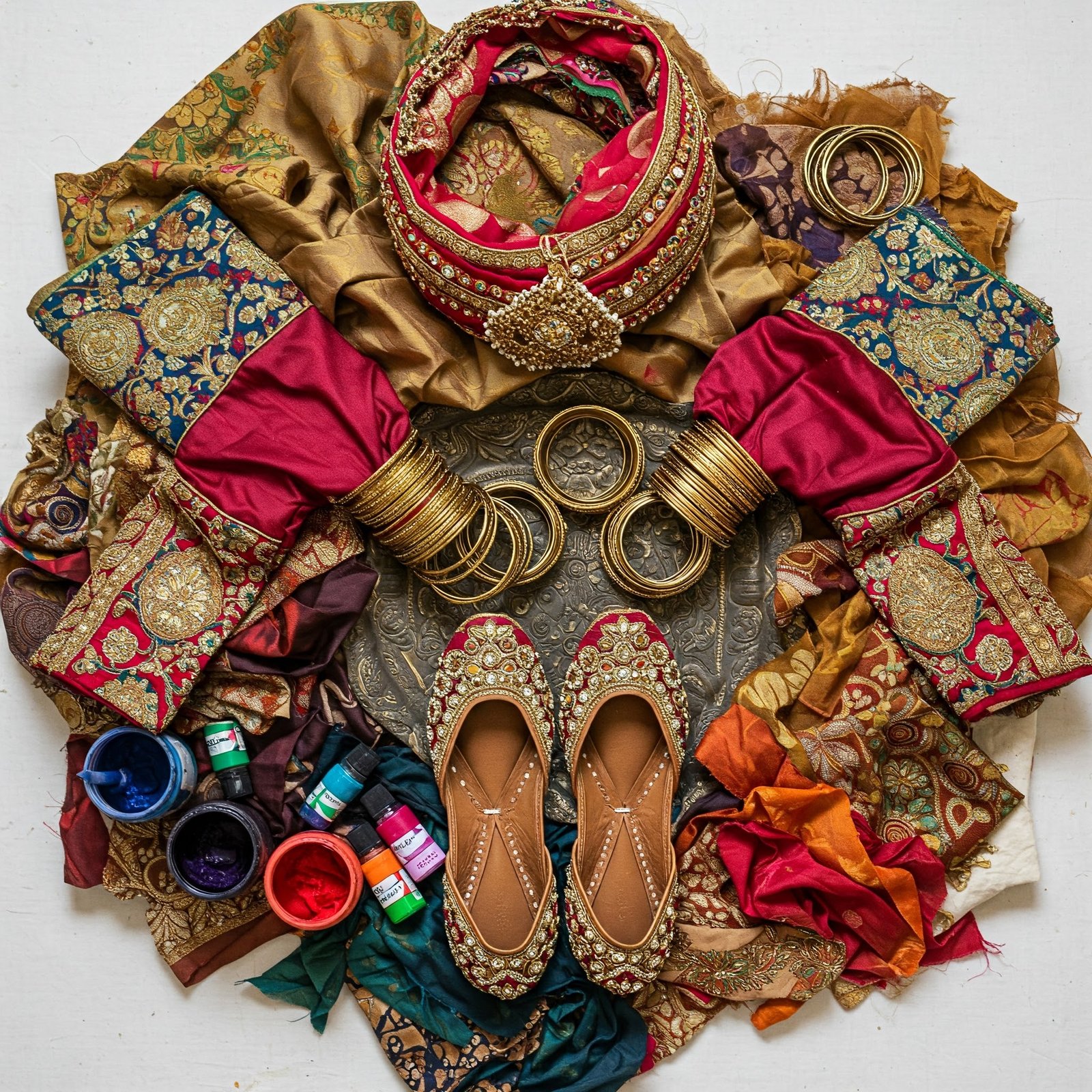Walking through urban India today, I’m struck by how dramatically street style has evolved over the past year. As we move deeper into 2026, distinctive trends are emerging that reflect both global influences and uniquely Indian sensibilities. Having spent the last few months documenting street fashion across major metros, I’m excited to share my observations on the looks that are defining this moment in Indian street style 2026.
As someone who obsessively documents street style outside every college festival and designer pop-up, I’ve tracked these trends from their first sidewalk appearances to viral Instagram moments. My predictions are based on:
-
200+ outfit photos I’ve taken at Delhi’s Dilli Haat and Mumbai’s Linking Road
-
Countless conversations with local boutique owners about what’s actually selling
-
Watching which Reels flop (because comments don’t lie – those ‘trends’ got roasted)
From Designer Rina Singh (Email Interview Excerpt):
“2026’s street style is about controlled chaos—mixing handloom with holographic fabrics. But always anchor one traditional element, like a hand-embroidered dupatta.”
Neo-Desi Futurism Takes Center Stage

The most striking trend I’ve witnessed is what fashion insiders are calling “Neo-Desi Futurism”—a bold aesthetic that combines traditional Indian textiles and techniques with futuristic silhouettes and technical innovations.
On a recent photo walk through Mumbai’s Bandra district, I spotted numerous young professionals wearing jackets made from traditional handloom fabrics. Still, I cut in sharp, architectural shapes with technical features like detachable hoods and climate-adaptive properties. Many incorporate subtle LED threading or temperature-responsive elements that change color based on environmental conditions.
“I love how these pieces honor our craft traditions while feeling completely forward-looking,” explained Vikram, a 28-year-old UI designer whose indigo-dyed cotton jacket featured subtle conductive threading that connected to his digital devices.
What makes this trend particularly interesting is how it reflects India’s unique position at the intersection of ancient textile traditions and cutting-edge technology development. These garments aren’t merely aesthetic statements but functional pieces for navigating contemporary urban life.
Check out this Neo-Desi technical jacket on Amazon
Hyperlocal Identity Fashion Gains Momentum

Another fascinating movement I’ve observed is what I call “Hyperlocal Identity Fashion”—pieces that celebrate specific neighborhoods, districts, or city zones through visual references and materials.
In Bangalore, I encountered a group of young creatives wearing custom garments featuring abstract maps of their particular urban villages, with fabrics sourced exclusively from local vendors. In Delhi, tees and jackets bearing stylized representations of specific metro stations or neighborhood landmarks have become popular among students and young professionals.
“Each city in India has such distinct energy and history,” shared Priya, a graphic designer whose oversized shirt featured an artistic rendering of her Kolkata neighborhood. “Wearing something that represents your specific urban space feels much more meaningful than generic city merchandise.”
This trend reflects a growing desire for specificity and authenticity in an increasingly homogenized global fashion landscape. It also supports hyperlocal economies, with many pieces produced by neighborhood workshops and featuring materials sourced within walking distance of where they’re sold.
Climate-Adaptive Wardrobes Become Essential

With increasingly unpredictable weather patterns affecting urban India, I’ve noticed the rise of what fashionistas are calling “climate-adaptive wardrobes”—versatile pieces engineered to function across multiple weather conditions.
During the monsoon season in Chennai, I was fascinated by the prevalence of elegantly designed water-resistant layers that convert from lightweight rain protection to sun shields with simple adjustments. Many feature advanced natural fiber blends that provide cooling in humidity while offering protection from sudden downpours.
“My grandmother’s wisdom about layering for changing weather has been reimagined with modern materials,” explained Arun, wearing a multifunctional dhoti-inspired bottom that converted between three different lengths. “These aren’t just fashion statements—they’re practical solutions for living in cities with increasingly extreme weather.”
What I find most compelling about this trend is how it combines traditional knowledge about dressing for Indian climates with contemporary material innovation, creating pieces that are both culturally resonant and environmentally responsive.
Augmented Fashion has become commonplace

Perhaps the most futuristic trend I’ve documented is the mainstream adoption of what was once niche “augmented fashion”—garments and accessories that incorporate digital elements visible through smartphone cameras or AR glasses.
On college campuses and in creative districts, I regularly see young people wearing seemingly minimal garments that transform into elaborate visual displays when viewed through digital devices. Some display artwork, others share social information or creative portfolios, and some change their appearance based on the viewer’s preferences.
“My physical style is actually quite understated,” said Rohan, a media arts student whose simple white shirt revealed an elaborate animation sequence when viewed through my phone camera. “But my digital layer lets me express different aspects of my personality depending on who’s looking and what I want to share with them.”
This trend highlights the increasingly fluid boundary between physical and digital self-expression, particularly relevant in a country with one of the world’s highest rates of smartphone adoption and digital engagement.
Craft Revival Gets a Youth-Led Reboot
One of the most heartening trends I’ve witnessed is the dramatic resurgence of traditional Indian crafts in street style, reimagined by young designers in conversation with master artisans.
In Ahmedabad, I spent time with a collective of Gen Z designers working directly with traditional bandhani artisans to create contemporary pieces that maintain the integrity of the craft while introducing modern silhouettes and unexpected color combinations. Their tie-dye-inspired streetwear has become instantly recognizable in urban centers.
“My grandfather was losing hope that his bandhani techniques would survive another generation,” shared Maya, a 24-year-old designer whose oversized bandhani jacket has been featured in several international street style blogs. “Now he’s teaching workshops to people my age who see the relevance of these techniques in contemporary fashion.”
This movement represents a meaningful bridge between generations and a sustainable approach to preserving cultural heritage through evolution rather than stagnation.
This contemporary bandhani streetwear piece on Amazon showcases this beautiful craft revival.
Gender-Fluid Silhouettes Become the Default
Walking through urban fashion districts in 2026, I’m struck by how thoroughly gender-fluid silhouettes have become mainstream rather than exception. The strict gender divisions that once dominated Indian fashion have given way to a more nuanced and inclusive approach.
In Delhi’s Hauz Khas Village, I observed how traditional garments like angrakha tops and dhoti-inspired bottoms have been reimagined as universal pieces, with subtle adjustments to fit different body types rather than strict gendering of styles. Contemporary urban labels now routinely present collections without gender distinctions.
“I don’t think about whether something is ‘meant’ for men or women anymore,” explained Alex, whose outfit combined elements traditionally associated with multiple genders. “I’m drawn to silhouettes that work with my body and express my personal aesthetic regardless of those old categories.”
This shift reflects broader cultural conversations about gender expression but has found particularly vibrant expression in street fashion, where young Indians are creating visual languages that transcend binary constraints.
The Return of Maximalism with Purpose

After years of minimalist dominance, the Indian street style has emphatically embraced a return to maximalism—but with intentional curation rather than excess for its own sake.
In Pune’s college districts, I’ve documented the rise of layered looks combining multiple patterns, textures, and cultural references in single outfits. Unlike previous maximalist movements focused on consumption, today’s approach emphasizes storytelling through thoughtful combination.
“Each element in my outfit connects to something meaningful in my life,” shared Divya, a 26-year-old musician whose richly layered ensemble included her grandmother’s vintage silk scarf, handcrafted jewelry from artisans she personally knows, and upcycled denim customized with embroidery representing her home state.
This purposeful maximalism reflects a generation’s desire to express complex identities and values through their appearance, creating visual manifestos rather than simply following aesthetic trends.
Where to Shop the Trends
(Handpicked & Tested for Real Indian Lifestyles)
1. Neon Dhotis: From Streets to Brunch
| Type | Budget Pick (Under ₹1.5K) | Investment Piece |
|---|---|---|
| Where | Cotton Poplin Dhotis (Amazon) | NorBlack NorWhite’s Silk Blend |
| Why | Survived 12+ washes (see below!) | Hand-block printed, breathes like linen |
| Sizing | “Size up for monsoon bloating” | Runs small – check size chart |
My Durability Test:
“After a brutal Mumbai monsoon (and 12 washes), these ₹999 Amazon dhotis still glow like new. Pro tip: Hang dry to prevent seam puckering.”
Final Thoughts: Indian Street Style as Cultural Conversation
As I review my documentation of Indian street style in early 2026, what strikes me most is how these trends reflect deeper cultural currents. Beyond aesthetics, these fashion choices represent ongoing dialogues about identity, sustainability, technology, and heritage.
The young people defining today’s street style aren’t merely consuming trends but actively creating new visual languages that address the specific complexities of the contemporary Indian experience—navigating between tradition and innovation, physical and digital, local and global.
Walking through urban India today offers a glimpse not just of what’s fashionable but of how a generation is choosing to present itself during a time of profound transformation. These aren’t just looks that will rule cities in 2026; they’re visual statements about what those cities might become.
FAQs
What are the top Indian street style trends in 2026?
Oversized shirts, denim-on-denim, co-ord sets, chunky sneakers, and bold sunglasses are dominating Indian streets this year.
Is Indian street style more about comfort or fashion?
It’s a perfect mix of both! Indian street fashion in 2026 leans toward relaxed fits and breathable fabrics without compromising on bold, trend-setting statements.
Can I mix traditional wear with street style?
Absolutely! Fusion looks like pairing a kurta with sneakers or styling sarees with crop jackets, which are super trendy this year.


